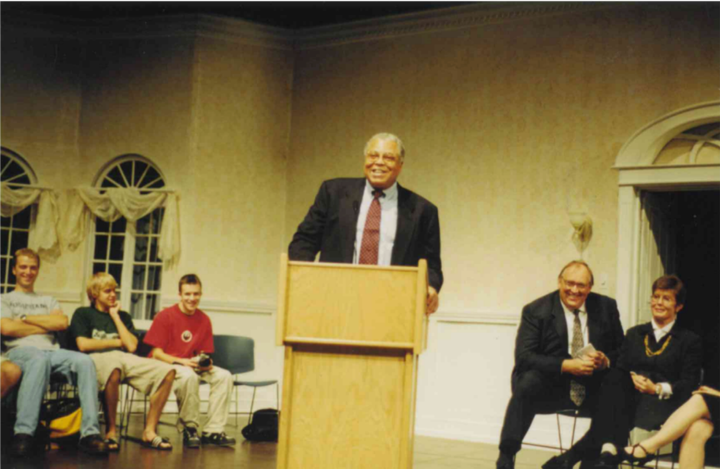2016 Election marks fifth time the Electoral College has chosen a winner who lost the popular vote
Electoral College alternatives exist as options for reconstruction

Every four years, the Electoral College crawls back into the limelight where many voters question its purpose and validity—this year especially. The 2016 Election marks the fifth time the Electoral College has produced a winner who lost the national popular vote.
In the fallout of this year’s election, many voters have demanded that the Electoral College change, deeming it an undemocratic mechanism past its prime.
Many criticize the Electoral College for violating the “one person, one vote” principle by favoring sparsely populated states.
For example, each South Dakotan elector represents 284,391 voters. Comparing this to a Texan elector, who represents roughly 750,000 voters, shows that a vote in South Dakota carries 2.5 times more leverage than a vote in Texas.
Along with this, the Electoral College allows electors to break their pledge and vote for whichever candidate they choose. Since the foundation of the Electoral College, 157 “faithless” electors have voted against their voter’s wishes, though it has never affected the outcome of an election. While 29 states and the District of Columbia have penalties for faithless electors, including fines and misdemeanors, the punishments are rarely enforced.
The winner-take-all system further encourages candidates to hyperfocus on a few swing states while ignoring the rest of the country. In the last leg of the 2012 Election, the Obama and Romney campaigns held 253 events in only 12 states while the other 38 states hosted zero events.
The most obvious alternative to the Electoral College would be the national popular vote method. Instead of voting for electors, voters would be voting for candidates, and the candidate who receives the most votes wins.
This method would equalize votes, making a vote in South Dakota equal to a vote in Texas and would ensure that the candidate who received the plurality of votes wins the presidency.
But this method would reduce the clout smaller states hold in an election, and it’s unlikely that they will sign onto the constitutional amendment needed to implement this method. It would further aggravate the contention that the rural minority is being subjugated by an urban majority, which has gripped the United States and other European nations.
Many, using the Florida recount in the 2000 Election as an example, also point out that a national recount would be an expensive and hellish process.
There is a way to implement the national popular vote without a constitutional amendment called the National Popular Vote Interstate Compact. States who enact this compact pledge their electoral votes to the national majority winner, essentially implementing the national popular vote without abolishing the Electoral College.
The compact will go into effect only when enacted by states possessing at least 270 electoral votes. Only 10 states and D.C., possessing s total of 165 votes, have currently enact it.
Another alternative is the congressional district method. Since electors are awarded to each state based on representation, this method allocates one electoral vote to each congressional district, leaving the remaining two electoral votes for the candidate who wins the statewide majority votes.
Currently, Maine and Nebraska are the only two states to use this method. In this year’s election, Hillary Clinton won three electoral votes in Maine by winning its first congressional district and the statewide vote and Donald Trump won one electoral vote by securing Maine’s second congressional district. In Nebraska, Donald Trump bagged all five of Nebraska’s electoral votes by garnering majorities in all three of the state’s congressional districts and the statewide vote.
This method could also be implemented without abolishing the Electoral College by simply passing a bill through state legislature.
Unlike the winner-take-all system, the congressional district method does not ignore opposing party districts within predominantly one-party states. For, example, Republican districts in California may still give a candidate their electoral vote, the same for Democratic districts within Texas.
However, using congressional districts as the basis of selecting electors, the reward for gerrymandering would be both congress and the presidency, which is a tantalizing prize for state legislatures.
Interestingly enough, if each state used this method in the 2012 Election, Mitt Romney would have defeated President Barack Obama 274 to 264 because Romney won a plurality of vote in 99 congressional districts in states Obama won.
Similar to the congressional district method, the electoral district method divides the state into as many electoral districts as it has electoral votes, instead of leaving two electoral votes for the winner of the popular vote. All electors would be chosen by popular votes within all electoral districts, but, similar to the congressional district method, states could be apt to gerrymander these districts to win.
A voting system is the foundation of a government. It doesn’t just decide which candidate is elected president but which voters are represented, which policies pass and, consequently, which voters benefit or suffer from those policies. But the truth is, there’s no simple way to select a voting method because each method has its benefits and drawbacks.
This shouldn’t demoralize those seeking an alternative but should motivate them to demand their government enact the method that represents each voter the most fairly and produces a winner that reflects the overarching beliefs of the electorate.



